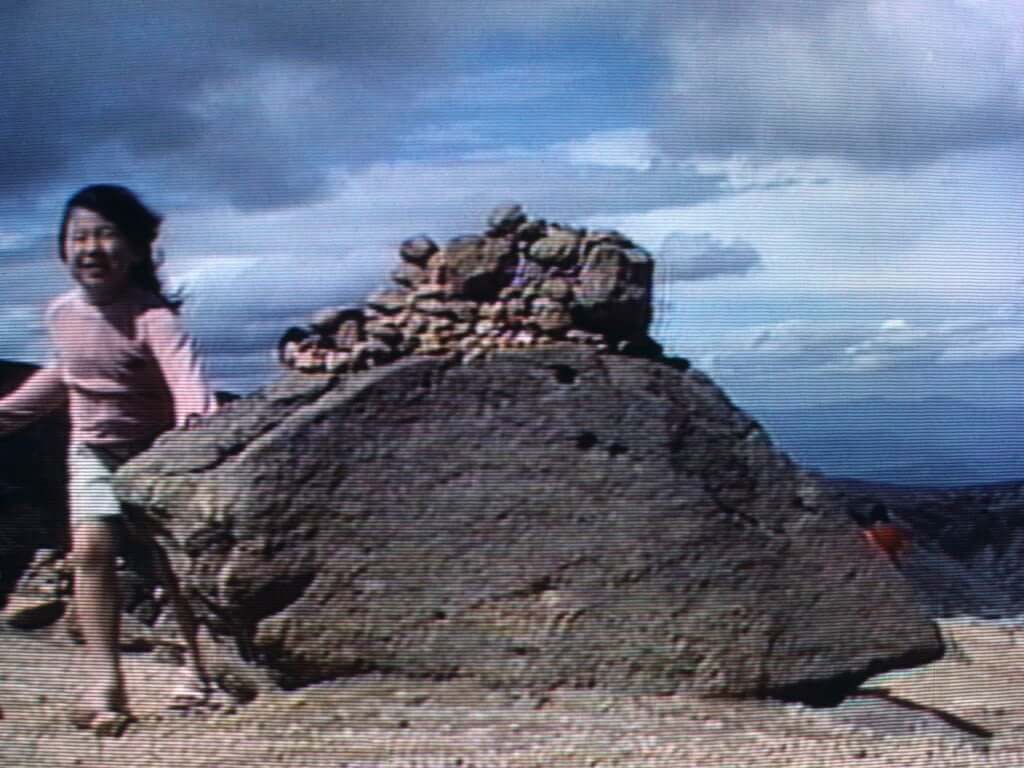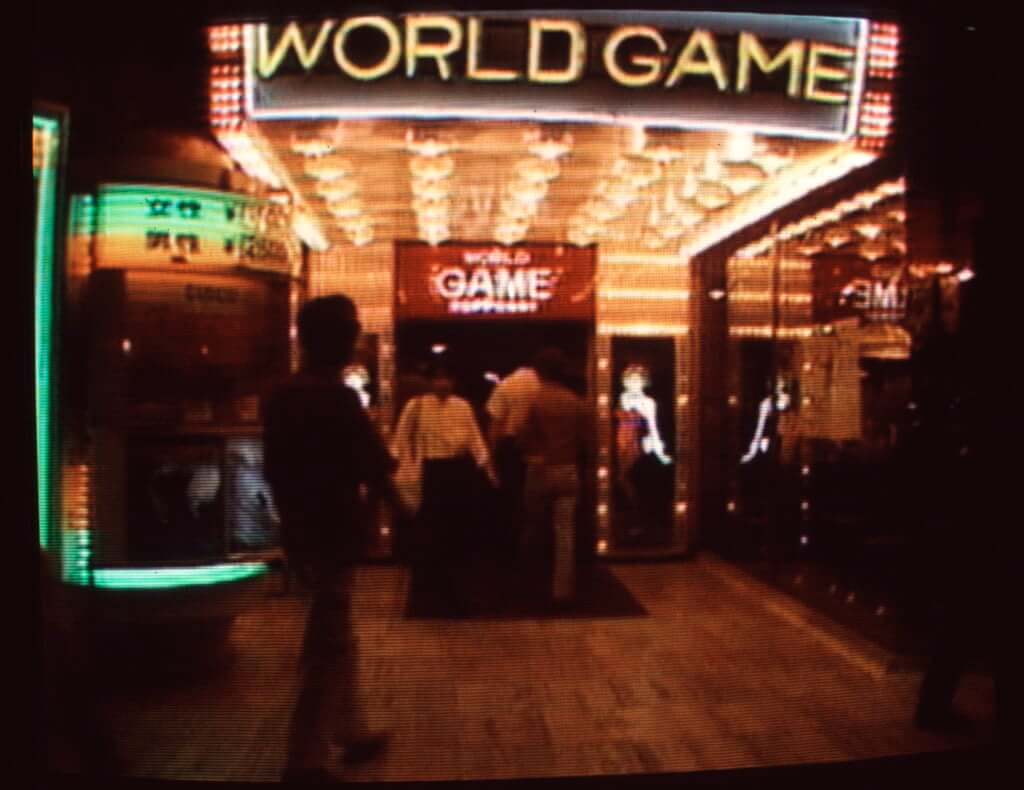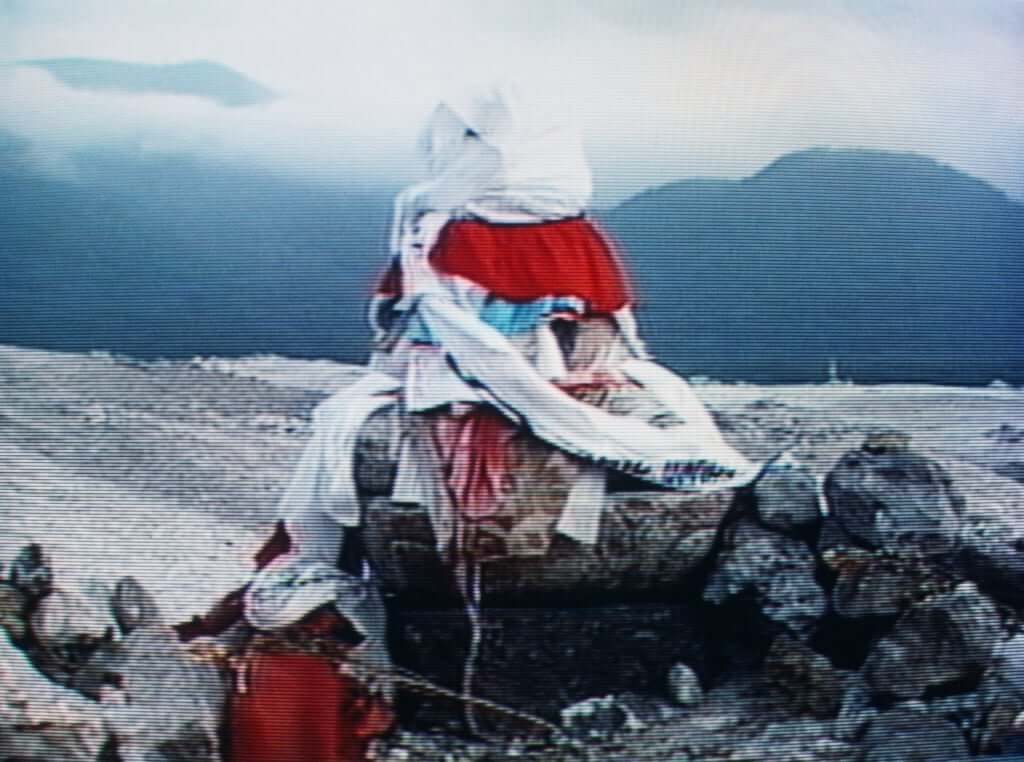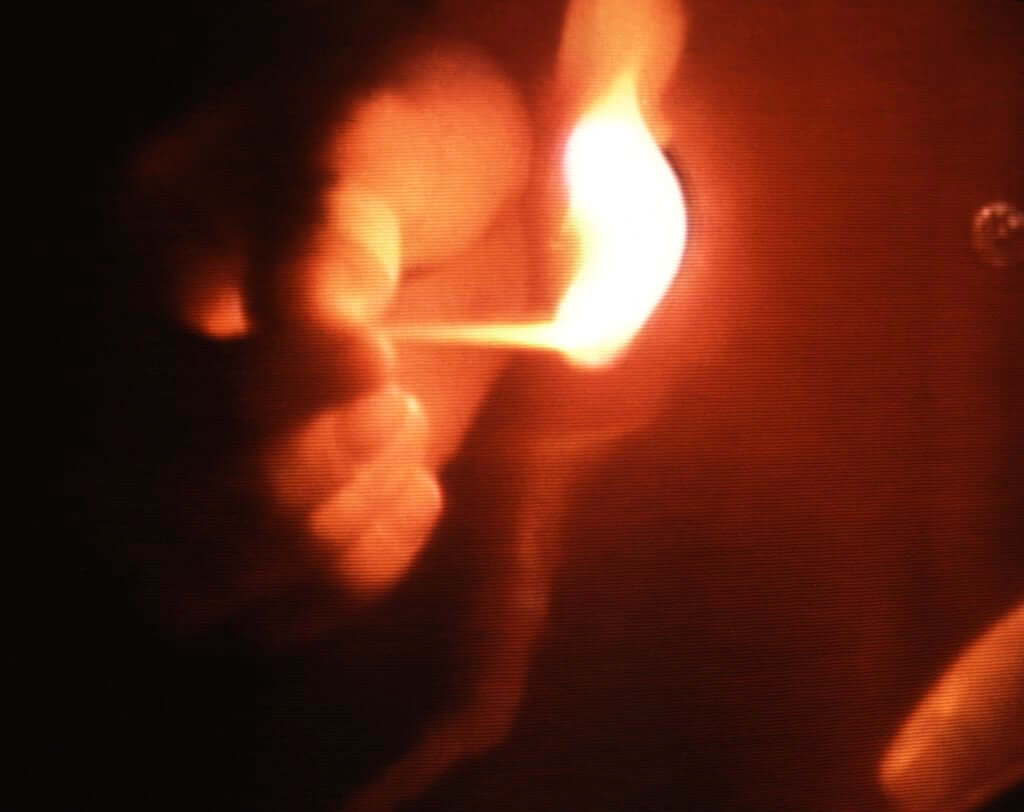Bill Viola, Dreamlike Trances
Early in his career, the American video maker chose Japan as the terrain in which he would plunge into the subconscious.

Bill Viola ‘Hatsu-Yume (First Dream)’, 1981 Colour video, stereo sound Photo: Kira Perov
In 1981, American artist Bill Viola was invited to a residency in Japan by Sony. The trip gave birth to the film Hatsu Yume (First Dream). The video takes the viewer on a 56-minute stroll across the island of Honshu, from the densly populated streets of Tokyo to the hinterlands of Osorezan, in what the filmmaker calls a metaphorical ‘personal observation of Japanese culture with a metaphysical contemplation of life, death and nature, achieved through a symbolic exploration of video’s relation to light and reflection.’
Journalist Herade Feist explains that, with Bill Viola being born in 1951—the year that American singer Bill Crosby presented the first video recorder in Los Angeles—‘one of the most famous proponents of video art was born the same year as the medium.’ A pioneer of video art alongside Nam June Paik or Bruce Nauman, towards the end of the 1970s, his work began to address themes of life, death, sleep, solitude, pain, identity, and spirituality. Trained at Syracuse University, his platform of predilection is large-scale installations.
Land is the death of the fish — darkness is the death of man
In the early 1980s, Bill Viola spent almost a year and a half in Japan. He studied Zen Buddhism and Noh theatre. This initial immersion in Japanese culture allowed him to draw parallels with his research on the art of meditation. Captivated by the light and the landscapes that he observed over the course of his trip, the artist recorded different videos organised over the space of a day. In each one, the metaphorical significance is clear—from the start of the day until the end, between light and dark, Bill Viola’s images reflect on questions of opposition and difference, newness, rationality and the unconscious, the urban and the natural.
In a text accompanying Hatsu Yume, Bill Viola explains the work further: ‘I was thinking about light and its relation to water and to life, and also its opposite—darkness or the night and death. Video treats light like water—it becomes fluid on the video tube. Water supports the fish like light supports man. Land is the death of the fish—darkness is the death of man’. The work operates like a hypnotic visual poem.
The video is currently only available to watch in full when exhibited, and is among the collections of major museums including MoMA, the Stedelijk Museum, and the Centre Pompidou.
In 2016, the artist completed his second permanent installation at Saint Paul’s Cathedral in London, with his aim being as follows: ‘the final pieces will function both as aesthetic objects of contemporary art and as practical objects of traditional contemplation and devotion.’ A film was also made in conjunction with the work: Bill Viola: The Road to St Paul’s (2017).
Hatsu Yume (1981) by Bill Viola can be found at the Centre Pompidou.

Bill Viola ‘Hatsu-Yume (First Dream)’, 1981 Colour video, stereo sound, Photo: Kira Perov

Bill Viola ‘Hatsu-Yume (First Dream)’, 1981 Colour video, stereo sound, Photo: Kira Perov

Bill Viola ‘Hatsu-Yume (First Dream)’, 1981 Colour video, stereo sound, Photo: Kira Perov

Bill Viola ‘Hatsu-Yume (First Dream)’, 1981 Colour video, stereo sound, Photo: Kira Perov

Bill Viola ‘Hatsu-Yume (First Dream)’, 1981 Colour video, stereo sound, Photo: Kira Perov
TRENDING
-
A House from the Taisho Era Reveals Its Secrets
While visiting an abandoned building, Hamish Campbell discovered photographs the owner had taken of the place in the 1920s.

-
The Taboo-Breaking Erotica of Toshio Saeki
The master of the 1970s Japanese avant-garde reimagined his most iconic artworks for a limited box set with silkscreen artist Fumie Taniyama.

-
With Meisa Fujishiro, Tokyo's Nudes Stand Tall
In the series 'Sketches of Tokyo', the photographer revisits the genre by bringing it face to face with the capital's architecture.

-
Masahisa Fukase's Family Portraits
In his series ‘Family’, the photographer compiles surprising photos in which he questions death, the inescapable.

-
Hajime Sorayama's Futuristic Eroticism
The illustrator is the pioneer for a form of hyperrealism that combines sensuality and technology and depicts sexualised robots.





